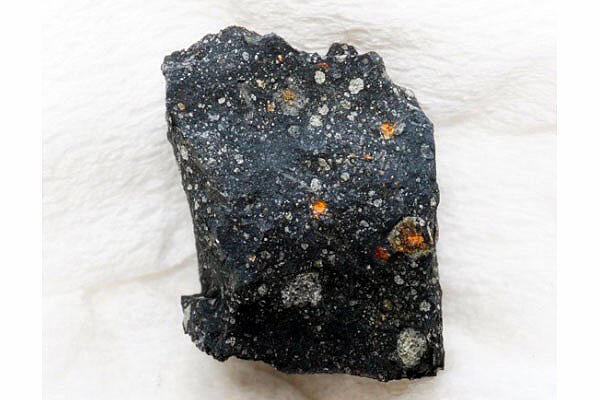The research group of Associate Professor Yoshihiro Furukawa and Professor Yoshinari Iwasa (graduate student) of Tohoku University, Faculty of Science and Professor Yoshito Chikaraishi of Hokkaido University Institute of Low Temperature Science, announced that they clarified the fact that the difference in carbon isotope composition between insoluble organic matter contained in meteorites, which is thought to be the origin of life on Earth, and low-molecular-weight organic matter (such as amino acids and sugars) can be reproduced by the formose-t reaction. It is more likely that low-molecular-weight organic matter, such as amino acids and sugars contained in asteroids, was produced from common materials than was previously thought. The results are published in the "April 29 issue" of "Science Advances" published by the American Association for the Advancement of Science.

© Yoshihiro Furukawa
Organic substances such as amino acids and sugars contained in asteroids, travel to the Earth via meteorites and it is believed that these substances may have been the origin of life on Earth 4.6 billion years ago. To find these traces, JAXA and NASA are conducting a planetary probe survey. On the other hand, it is unknown how the organic matter contained in these meteorites is produced; several possibilities exist in this regard. The research group previously discovered ribose (sugar) contained in meteorites in 2019.
This time, the research group focused on the characteristics of low-molecular-weight organic substances, such as amino acids and sugars; in carbonaceous meteorites, these compounds were richer in 13C isotopes than those of the planet, whereas major insoluble organic substances contained more 12C isotopes than those of the planet. As it is known that these differences record the behavior of chemical reactions, a simulated experiment was performed to hypothesize and verify whether the isotopic composition is due to the Formose-type reaction, wherein organic substances containing sugars are chemically synthesized from aldehydes. Specifically, water, ammonia, and aldehydes were heated in an alkaline atmosphere at 80 °C for 5-90 days using an electric furnace to imitate the environment of space.
The sample obtained from this was separated by centrifugation into insoluble organic matter and water-soluble amino acids and sugars. The carbon isotope composition of amino acids and insoluble organic substances was then analyzed. The results showed that as the reaction progresses, 13C isotopes were concentrated in amino acids, while 12C isotopes were concentrated in the insoluble organic substances. Each proportion matched the characteristics of the meteorite organic matter. Of 12C and 13C, the lighter 12C is more reactive, and it is thought that the insoluble organic matter that is formed first contains a large amount of 12C; 13C remains in the amino acid aggregates that are formed later. In addition, the study found that the relative concentrations of carboxylic acids and amines formed were consistent with those of the meteorite organic matter. So far, no experiment has been able to reproduce the isotope composition.
Until now, there was a theory that the characteristically higher ratio of 13C isotopes in meteorite amino acids was due to organic matter production in a cryogenic environment with temperatures of 10 K or less in a location far from the Sun; however, it was found that such conditions are unnecessary. This isotope is ubiquitous to asteroids of the solar system and has been proven to be able to supply amino acids for the origin of life. In this experiment, the hydrothermal reaction was simulated on the premise that water exists inside the meteorite. However, as the formorse-type reaction proceeds in the presence of both heat as well as light, this reaction can be considered to be highly plausible as the origin of amino acids. Verification of this outcome with samples obtained by Hayabusa2 and other projects is also expected.
This article has been translated by JST with permission from The Science News Ltd.(https://sci-news.co.jp/). Unauthorized reproduction of the article and photographs is prohibited.




